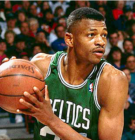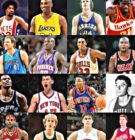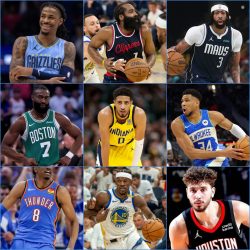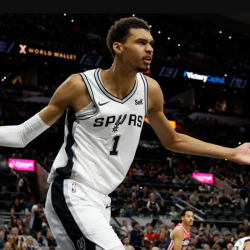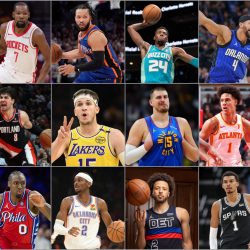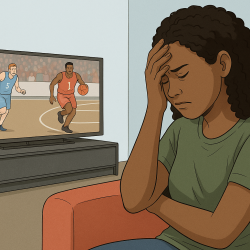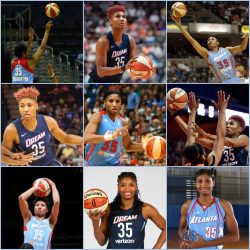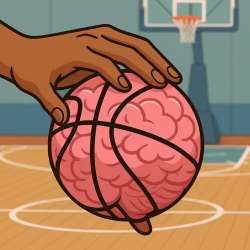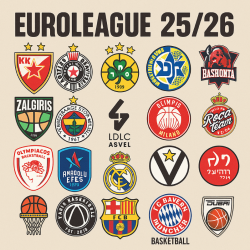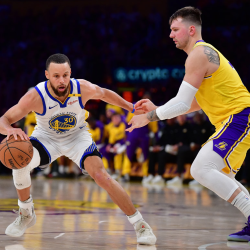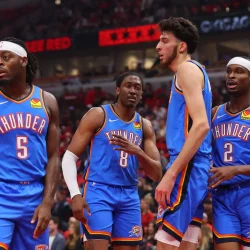 In the nearly 80‑year history of the NBA, the league has logged close to 100 father‑and‑son combinations, yet because the WNBA launched only in 1997, just three families can claim a mom who laced up in the women’s league and a son now earning an NBA paycheck. According to Basketball‑Reference, twenty‑eight current NBA players have fathers who previously appeared in an NBA game, underscoring how common paternal pipelines have become compared with maternal ones
In the nearly 80‑year history of the NBA, the league has logged close to 100 father‑and‑son combinations, yet because the WNBA launched only in 1997, just three families can claim a mom who laced up in the women’s league and a son now earning an NBA paycheck. According to Basketball‑Reference, twenty‑eight current NBA players have fathers who previously appeared in an NBA game, underscoring how common paternal pipelines have become compared with maternal ones
The WNBA’s shorter lifespan helps explain the gap: by the end of the 2025 season it will have completed 29 regular seasons, less than half the NBA’s tenure – not to mention fewer players with only 13 franchises.
WNBA Players with NBA Sons
That said, women’s basketball is now old enough to see its earliest WNBA players have passed the torch. Given that the WNBA has existed fewer than 3 decades, statistical odds are tiny: fewer than 150 women appeared in the league’s first two seasons in 1997 and 1998 and only a handful had children during that window. Also the average career lengths also differ; the typical WNBA veteran retires after about six seasons, while NBA veterans last closer to nine, narrowing the window for overlapping generations. Even so, three families have already produced a mother who played professionally and a son who reached the NBA.
Rhonda Smith‑Banchero and Paolo Banchero

When Rhonda Smith graduated from Washington in 1995 she did so as the program’s all‑time leading scorer with 2,948 points. She spent several years playing professionally and remembers lugging Paolo, then a toddler, to her high‑school practices in Seattle. “He’d be off to the side shooting, but my only rule was no trick shots,” Rhonda joked this summer. That early discipline has paid compound interest. Paolo Banchero averaged 20.0 points and 6.9 rebounds on his way to the 2023 NBA Rookie of the Year award, then erupted for 21 points on 8‑for‑10 shooting in Team USA’s 2024 FIBA World Cup opener. “I wanted to be like her,” Paolo said. “Being in the gym every day grew my love for the game.” Smith‑Banchero confirms that her son’s multi‑faceted skill set surpasses her own. “I was a banger with three moves. Paolo is already far more advanced,” she told USA Basketball. ESPN analytics list him as one of only three second‑year forwards to post a usage rate above 27 percent while maintaining true‑shooting efficiency above league average, a profile that is now baked into the latest NBA odds and betting insights released by major sportsbooks. We don’t know about that, Pam is a all-timer in terms of women’s basketball and Paolo while a one-time all-star, is only going into his fourth NBA season.
Pamela McGee and JaVale McGee

Pamela McGee, a double‑double machine at USC and a 1984 Olympic gold medalist, played in the WNBA’s inaugural 1997 season for Sacramento and Los Angeles. Pam later told reporters, “My kids grew up in gyms before they could walk.” That statement explains why her son, JaVale is a three‑time NBA champion who averaged 8.4 points, 5.2 rebounds and 1.4 blocks across sixteen seasons. In Tokyo 2021 he joined Team USA and made the McGees the first mother–son Olympic gold duo in basketball history. Pamela’s legacy did not stop there; daughter Imani McGee‑Stafford logged four WNBA seasons and remains active overseas. “Mom always preached defense first,” JaVale said after winning the 2020 title with the Lakers. That mindset translated: his rim protection ranked top‑ten in block percentage six different seasons, according to Basketball‑Reference. Pamela sees the symmetry. “It feels like everything I poured into the game came back through my children,” she told NBC Sports in 2024.
Niele Ivey and Jaden Ivey
Niele Ivey’s rookie season with the Indiana Fever in 2001 came with an unexpected twist: she discovered mid‑summer that she was pregnant with Jaden. Rather than sit out, she played all 32 games while “feeling scared and nervous” about her future in the league. Two decades later that baby is the Pistons’ foundational combo guard, averaging 16.3 points and 5.2 assists as a rookie. “If I wasn’t holding him, Tamika Catchings had him,” Niele laughs when recalling how her teammates became aunties to a gym‑rat toddler.
Jaden credits those hours: “I learned the game being around her, every day, going to the gym.” After her playing career, Niele joined Notre Dame’s staff and later spent a season as an NBA assistant in Memphis, further expanding her basketball IQ. Jaren Jackson Jr. called her “a natural” at the NBA level. Jaden still sends her game film. “She watches every game and tells me what I can tighten up. She’s my biggest critic and biggest supporter,” he told Bally Sports in March. Few rookies enjoy that kind of on‑call coaching, and it shows in his rapid pick‑and‑roll reads: Synergy Sports graded him in the 72nd percentile as a ball handler by the season’s second half.
Why These Stories Matter
Harvard economist Claudia Goldin notes that “intergenerational transmission of elite athletic skill is rare, even when early advantages exist.” Each mother here did more than pass down height or coordination. They modeled work habits, opened gym doors after hours and taught situational basketball as a second language.
The WNBA trio’s sons have produced a combined 21.6 Win Shares through the 2024‑25 season, per Basketball‑Reference, and they are signed to contracts worth more than $230 million in guaranteed money. JaVale’s three championship rings, Paolo’s Rookie of the Year trophy and Jaden’s All‑Rookie honors mark tangible milestones built on maternal groundwork. “It is destiny,” Pamela McGee said when asked about raising two professional athletes. Rhonda echoes that sentiment but adds, “We also scheduled a lot of early‑morning shooting.”
As youth participation in girls’ basketball rose 12 percent from 2010 to 2022, per the Sports & Fitness Industry Association, analysts expect the pool of future WNBA alumni‑turned‑mothers to grow.
Stories of NBA fathers mentoring NBA sons are plentiful, yet the mother–son pipeline has taken longer to form because the WNBA itself is only twenty‑eight years old. Pamela McGee, Rhonda Smith‑Banchero and Niele Ivey highlight what can happen when that timeline matures. Each woman reached the professional apex of her era, then leveraged those lessons to guide a child into the modern NBA. They also showcase how women’s sports history is no longer just parallel to men’s history but directly feeds it. As the WNBA enters its third decade, more toddlers will toddle along baseline corners during practice, and the list of mother‑son NBA pairings will grow – we’ll update this list when it does.


